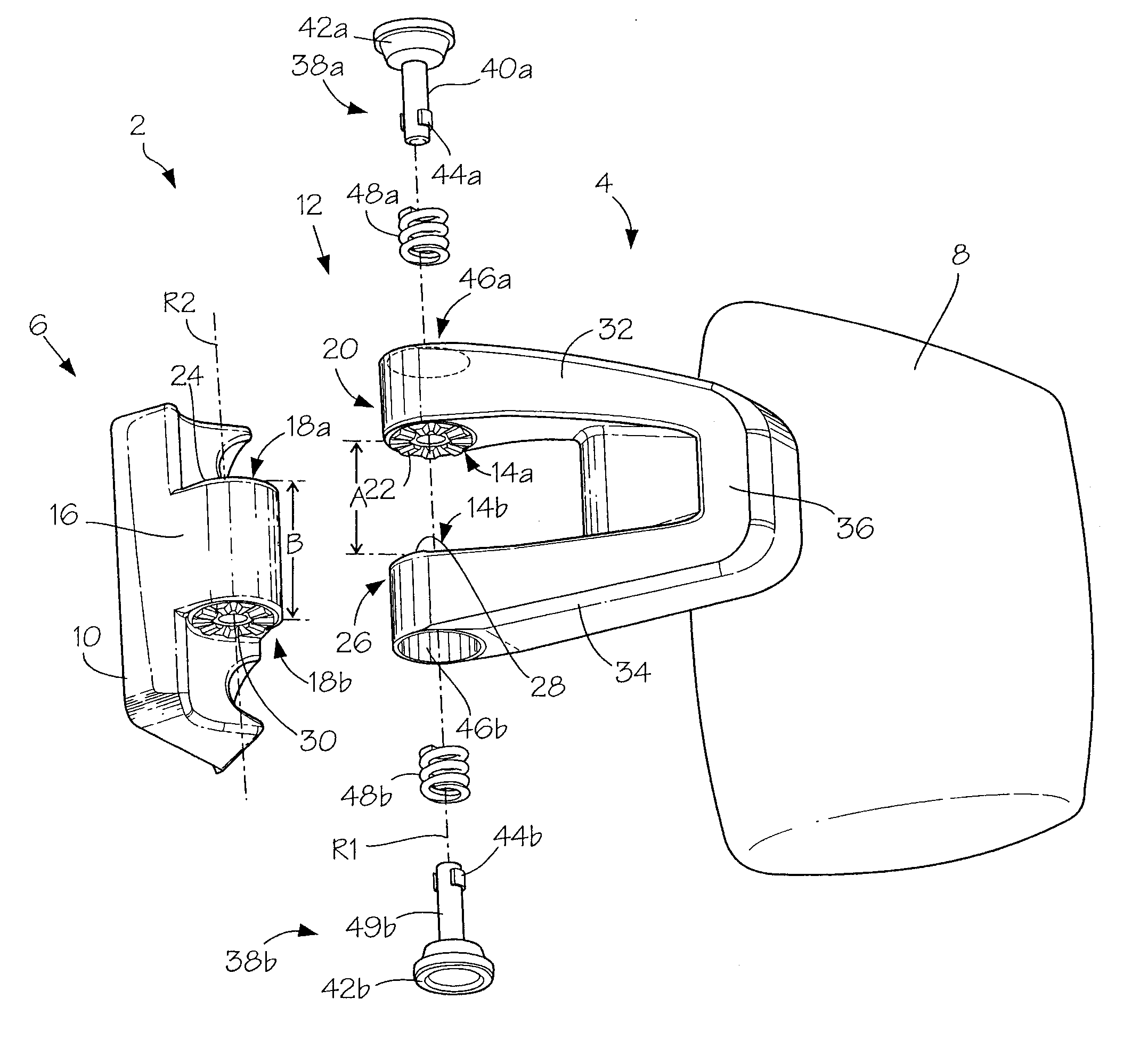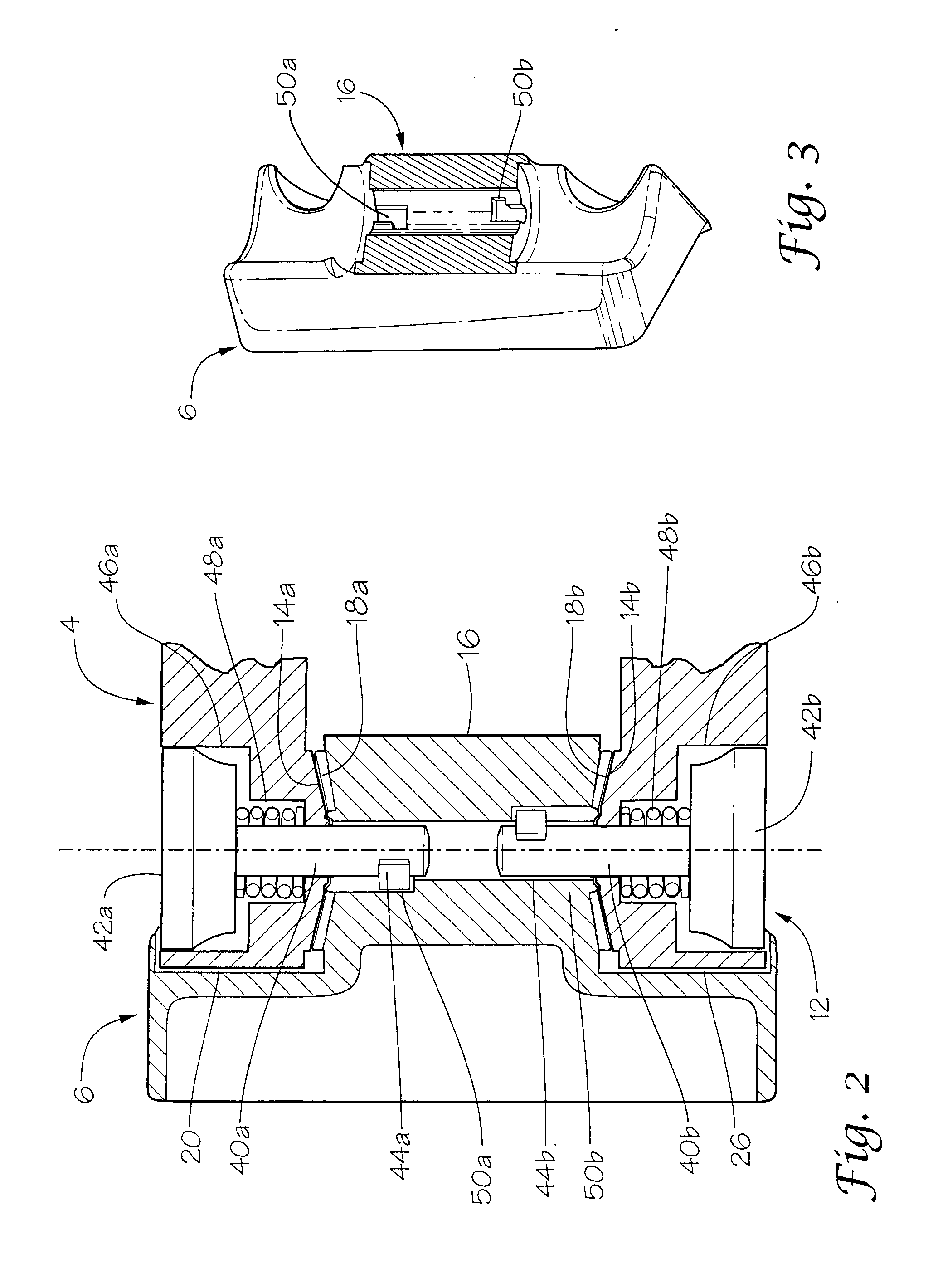Locking hinge for an exterior vehicle mirror assembly
a technology for exterior vehicles and hinges, applied in door/window fittings, multi-purpose tools, construction, etc., can solve the problems of inability to adjust accurately, lack of flexibility in design, and large weight of locking hinges, so as to ensure the longevity of the spring element, enhance the locking position, and improve the effect of safety
- Summary
- Abstract
- Description
- Claims
- Application Information
AI Technical Summary
Benefits of technology
Problems solved by technology
Method used
Image
Examples
Embodiment Construction
[0030]With reference to the drawings of FIGS. 1 and 2, the invention will now be described in more detail. The locking hinge, designated generally as 2, primarily consists of one first locking arm, 4, and one second locking arm, 6, whereby the first locking arm 4 serves to hold an exterior mirror head, 8, and the second locking arm, 6, is fixed to a vehicle body (not shown). For this purpose, the second locking arm, 6, has a base, 10, which can be screwed on to the body of the vehicle. The first locking arm, 4, and the second locking arm, 6, are pivoted to one another around a hinge axis, and can be fixed to one another in at least one relative position, which is represented in the disassembled drawing by two dotted lines, R1 and R2.
[0031]A hinge axis arrangement, designated generally as 12, is provided between the first locking arm, 4, and the second locking arm, 6, for this purpose.
[0032]The first locking arm, 4, has two bearing surfaces, 14a and 14b for the hinge axis arrangement...
PUM
 Login to View More
Login to View More Abstract
Description
Claims
Application Information
 Login to View More
Login to View More - R&D
- Intellectual Property
- Life Sciences
- Materials
- Tech Scout
- Unparalleled Data Quality
- Higher Quality Content
- 60% Fewer Hallucinations
Browse by: Latest US Patents, China's latest patents, Technical Efficacy Thesaurus, Application Domain, Technology Topic, Popular Technical Reports.
© 2025 PatSnap. All rights reserved.Legal|Privacy policy|Modern Slavery Act Transparency Statement|Sitemap|About US| Contact US: help@patsnap.com



